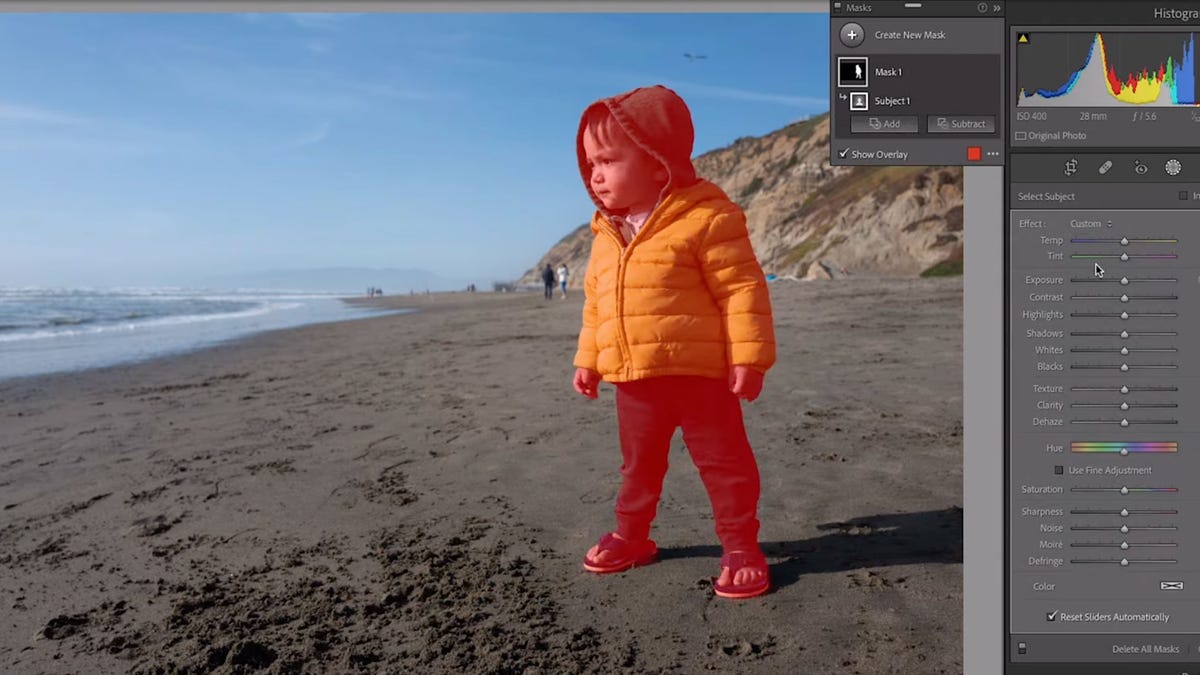Adobe Lightroom is getting more powerful with AI-based selection tool
Your brain can spot the subject of a photo. Adobe's photo editing software is getting a similar capability after learning from 500,000 shots.

Adobe is adding subject and sky selection technology into its Lightroom software.
Adobe will add a new selection tool to its Lightroom software in October to help photo editors get the look they want with less manual labor. The feature, powered by artificial intelligence technology, lets photographers spotlight photo subjects like people, buildings and animals with a single click so they can fine tune color, lighting, tonality and other characteristics.
The technique relies on AI to identify specific subjects or other points of interest in a photograph, such as the sky, after the user selects a portion of the photograph. The selection, called a mask, helps photographers with tasks such as making people in the shade stand out or brightening washed-out skies.
"Masking now enables you to make complex selections with a single click and then refine those selections with accuracy and ease," Pei Ketron, a Lightroom team member, said in a video detailing the masking feature ahead of its release on Oct. 26, the first day of the Adobe Max show.
Adobe is building the technology into Lightroom, Lightroom Classic and the Adobe Camera Raw (ACR) tool in Photoshop. That'll make it available on Windows machines, Android phones, iPads, iPhones and Macs. It won't be available on Lightroom on the web, though, Adobe said.
The new Lightroom masking technique shows the increasing power of AI, technology that's sweeping the computing industry because of its ability to handle the complexity of real-world data. AI systems are typically trained on huge quantities of carefully annotated data, for example photos with the human faces highlighted. That's more useful than trying to describe in programming language terms what eyes, noses and mouths look like.
If it works as advertised, it'll mean photographers won't have to open their shots in Photoshop for detailed edits and won't be as likely to move to rival software, such as Phase One's Capture One that have more elaborate tools for masking and selection.
The technology can spot a variety of subject types based on how Adobe trained its AI system, the company said.
"Select Subject uses a specially trained saliency detector to identify the central subject in a photo and has been trained with over 500,000 photos covering a range of people, man-made structures, animals, and natural objects," Adobe said.
Adobe is building a variety of AI tools into its software. Lightroom uses AI to zoom into photos, for example, and Photoshop now includes neural filters for jobs like smoothing skin, blurring backgrounds and adding color to black and white photos.
Adding the new selection tool took some engineering work. Previously, Lightroom and ACR stored mask information in a compact mathematical format. But the new selection technology adds a bitmap across the entire image, allowing different degrees of masking for each pixel, Adobe's Josh Bury said in a blog post. That paves the way for more changes, he added.
"We've also got some fun new tech brewing that we're really excited about that will take further advantage of bitmap-based masks which we'll be releasing sometime next year," Bury said.

